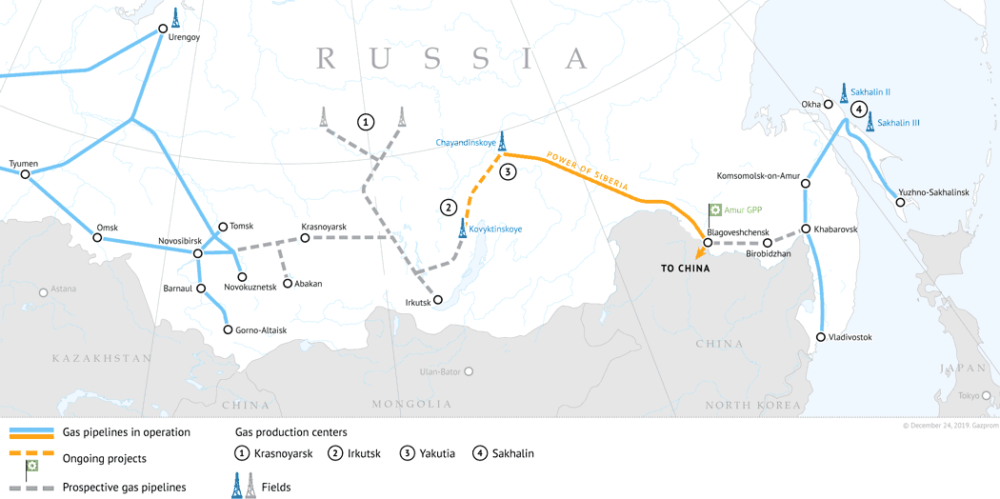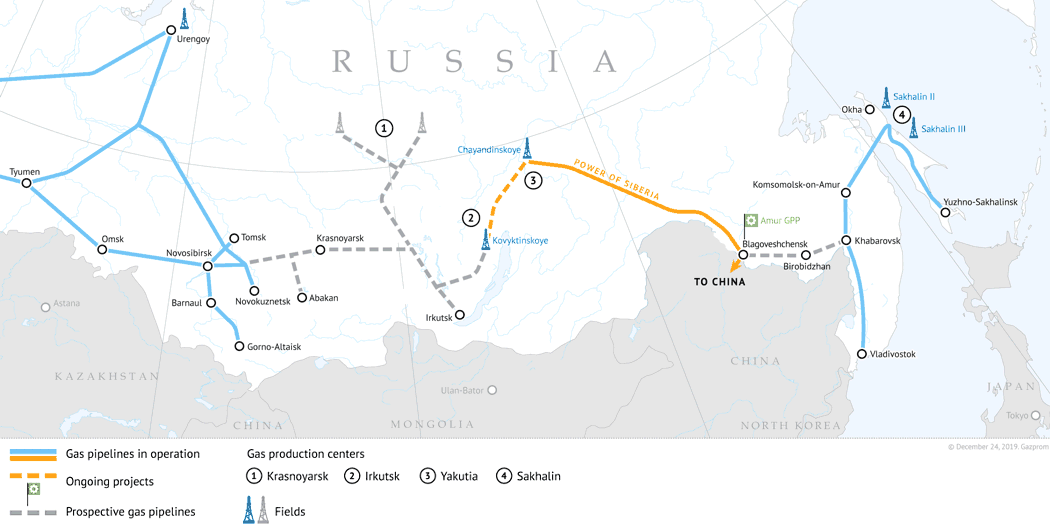
PEJOURNAL – China Russia East Pipeline (CREP) started to transmit natural gas from Changling Station in Jilin to Yongqing Station in Hebei, and CREP mid-section was officially put into commercial service. This 1,110 kilometers mid-section started construction from July 2019 and finished the whole project in 518 days, to provide 27 mcm/d natural gas supply to North China and help Beijing to spend 2020’s cold winter.
China Russia East Pipeline was set to supply 8 bcm of natural gas in its first year, but Gazprom and CNPC adjusted the schedule to 5 bcm in 2020. However, the underdeveloped natural gas consumption in Northeast China was not capable to digest all the delivery of Russian gas, and the 2020 import schedule was accordingly behind the schedule.
With the connection to the Beijing-Tianjin-Hebei region in the 2020 winter, the potential of CREP will be more utilized, and it is estimated that the piped natural gas import from Russia will embrace a significant jump from November and become a key role of North China’s winter supply on its massive availability and lower costs. According to Gazprom, the mid-section will bring at least 25% export growth of CREP instantly and further more in the future as expected.
The middle section of CREP starts from Jilin’s Changling station to Hebei Province’s provincial hub Yongqing Station, with a total length of 1,110 kilometers. This section is the major purpose of the CREP to provide natural gas supply to North China, which suffered from the gas supply shortage in the winter heating season for years. After 2017’s winter supply shortage, this region has become the barometer of China’s natural gas balance, and China government also implemented several crucial policies to secure the winter gas supply to avoid another 2017 winter shortage happening again.
North China used to receive piped gas from WEP Line, Shan-Jing Line and Yu-Ji Line from Northwest China and Central Asia, while LNG terminals around Bohai Bay rim also imported a great volume of LNG as a supplementary measure.
On the one hand, the government plans to build new terminals and expand existing terminals to double the regional LNG receiving capacity in less than three years, on the other hand, with the operation of the middle section of CREP, North China will be released from the burden to supply Northeast China for good, and the CREP will bring an extra natural gas supply from the Russian piped gas imports. Furthermore, the south section of CREP, which starts from Yongqing to Shanghai with a total length of 1,194 kilometers, has also been put into construction from 2020. This section is the final plan of CREP, and its operation may be set to 2023.
Till then, CREP will be in its full mighty to provide 38-43 bcma of natural gas to China, and Russia will become another major natural gas import origin in China’s natural gas supply rubbing shoulders with LNG suppliers Australia and Qatar and piped gas suppliers Turkmenistan and Kazakhstan.
